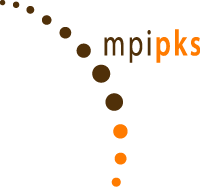
Limit Cycles and Synchronization Go Quantum
Workshop Report
The Focus Workshop QSync25 took place from June 30 to July 2, 2025 with a total of 52
participants (25 professors, 27 postdocs and PhD students, including the organizers) from 17
countries. 18 of the participants were affiliated with German research institutions, 23 with
European ones outside of Germany, and 11 participants came from Asia and the U.S. We
had to turn down a small number of potential participants.
Quantum limit cycles and quantum synchronization represent an emerging field that is intimately
connected to other active research areas like for example time crystals, lasing, and
active matter.
We had invited 17 speakers, 16 of which accepted our invitation without hesitation. Roberta
Zambrini (Palma de Mallorca) had to cancel for medical reasons and sent her long-time
collaborator Gian Luca Giorgi. The two speakers from Israel [Ron Lifshitz (Tel Aviv University)
and Nir Davidson (Weizmann)] were unable to attend the workshop due to airspace
closures in the Middle East.
All of the invited speakers are internationally leading experts and gave excellent talks. In
the following we mention a few of them.
After an introduction to the field, Eric Lutz (Stuttgart), reported on his collaboration with
two experimental groups in China. Rosario Fazio (ICTP Trieste) gave the first of a series
of talks on time crystals and their relation to quantum limit cycles. The QSync25 Colloquium
was given by Jonathan Home (ETH Z¨urich) who presented a very pedagogical and
authoritative introduction to many concepts in nonlinear quantum science with a particular
emphasis on trapped-ion experiments. Sai Vinjanampathy (IIT Bombay) talked on various
exotic synchronization phenomena in continuous time crystals. The last morning session
featured a set of more general talks on very timely emerging topics in the field of quantum
nonlinear systems. Florian Marquardt (Erlangen) discussed the use of coupled phase oscillators
in neuromorphic computing. Michel Fruchart (Paris) gave the first of several talks on
coupled oscillators or spins with nonreciprocal interactions.
The invited talks were complemented by 10 contributed talks and a poster session that was
introduced by a lively series of 2-minute poster pitches. The high scientific standing of most
of the participants resulted in a high-level poster session. One of the around 15 PhD students
gave a contributed talk, the others presented posters.
The talks, discussions, and posters at QSync25 demonstrated that the field is developing
rapidly and has great prospects. In particular, it brings together scientists from areas which
had been separated for a long time and thus opens many really new areas of research beyond
the traditional directions. Many of the participants knew each other only from their
publications and met for the first time in person.
To conclude: in our opinion, QSync25 was a great success. This success was made possible
by the superb infrastructure of the MPI-PKS and the excellent and always friendly support
of Anna Anastasiou.
Christoph Bruder Andreas Nunnenkamp Christopher Wächtler
